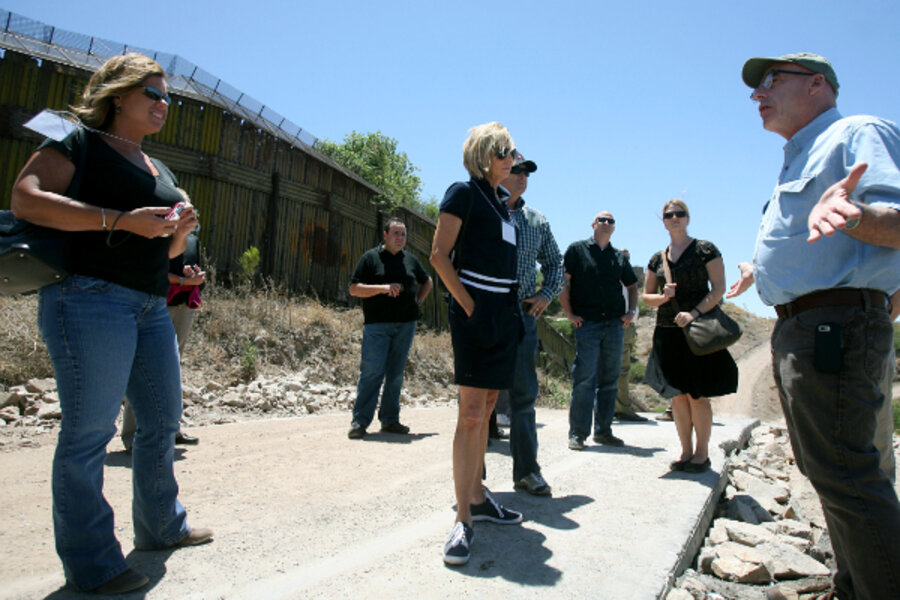US-Mexico border: new tourist attraction?
Loading...
| Tucson, Ariz.
The US-Mexico border: scary place or misunderstood region?
Now you can find out for yourself. A new Arizona bus tour promises to shed light on what life is really like along a stretch of the 2,000-mile international boundary, a flashpoint for heated debate over illegal immigration and national security.
“Border Crisis: Fact and Fiction” introduces tour-goers to ranchers, business owners, and others who live and work on both sides of the border.
“Take your own fact-finding mission on the US-Mexico border,” a Gray Line Tours advertises. “Don’t let the politicians and news broadcasters become your only source of information.”
The $75 tours, touted as apolitical, aim to get past the rhetoric that revolves around the border by offering twice-a-month trips to Nogales, Ariz., about 60 miles south of Tucson. The tours include a look at the state's busiest port of entry, the border wall, and a water tank placed a few miles away to aid migrants making the illegal trek north through the desert.
“So many people with so many agendas want the average person to believe the border is a certain way,” tour guide Bob Feinman says. “Sometimes it’s a good thing, sometimes it’s a bad thing. And it’s a pretty controversial thing all the time.”
The daylong trip gives people an opportunity to gain enough of an understanding about the border to shape their own views, he says.
Nogales is a high desert town of about 20,000 that lies in the Border Patrol’s 260-mile Tucson sector, the most guarded along the Southwest border. The town also is hub for cross-border commerce.
Tour organizers, which include Humane Borders and the Santa Cruz Community Foundation, eventually plan to extend the daylong excursions south of the border into Nogales, Sonora, Mr. Feinman says.
The short trip is ideal for those who want to satisfy their curiosity about the much-discussed border region, says Bob Phillips, the foundation’s executive director.
He hopes people who take the tour walk away with a picture in their minds that more closely resembles reality. “We certainly think that’s a good thing,” Mr. Phillips says.





